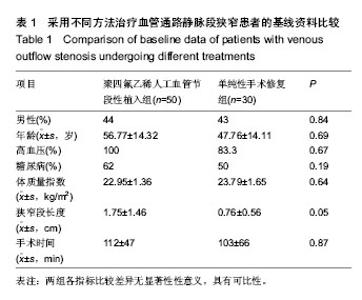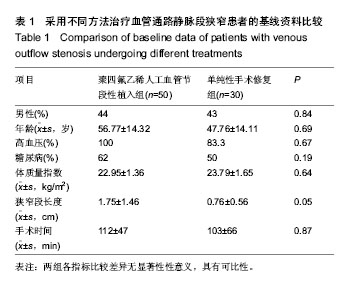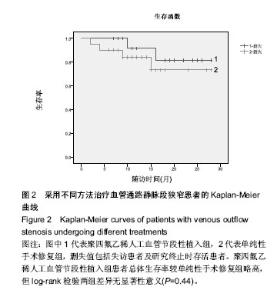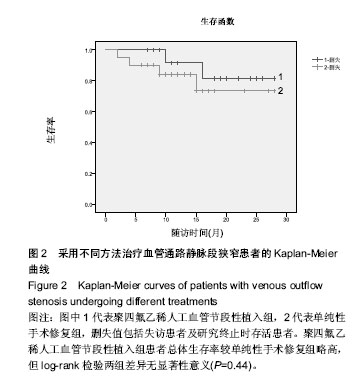| [1] 薛志强.手术再通治疗长期血液透析病人动静脉内瘘闭塞的临床研究[J].现代医院,2013,13(4):24-26.
[2] 马志芳,向晶,曾鹏,等.动静脉内痿超声引导下穿刺溶栓的疗效观察[J].中国血液净化,2010,9(10):574-576.
[3] 汪岷.维持性血液透析患者内瘘阻塞的原因分析和预防[J].中国医药科学,2011,1(20):153,156.
[4] 王保兴.动静脉内瘘非血栓性狭窄的原因及处理[C].首届《中国血液净化通路论坛》论文集,2011:28-29.
[5] Brescia MJ,Cimino JE,Appel K,et al.Chronic hemodialysis using venipuncture and a surgically created arteriovenous fistula. N Engl J Med.1966;275:1089-1092.
[6] 张纪蔚.人工血管性能要求和研究现状[J].中国实用外科杂志, 2007,27(7):560-561.
[7] 庄永青,童静,彭保,等.人工血管移植动一静脉造瘘术的临床应用[J].中国修复重建外科杂志,2000,14(1):1-3.
[8] 冉峰,刘长健,黄细,等.动静脉内瘘术用于血液透析的临床研究[J].中华显微外科杂志,2007,30(1):67-68.
[9] 鄢艳,谢建军,陈钦开,等.人造血管在血液透析通路中应用17例[J].中华显微外科杂志,2008,31(5):381-382.
[10] 陈元庄,胡女元,马滚韶,等.人工血管移植建立尿毒症患者永久性血管通路的临床应用[J].中国实用医刊,2013,40(14):59-61.
[11] 刘声茂,卢雪红,罗萍,等.同种异体血管内瘘与聚四氟乙烯人造血管内瘘的比较[J].中国老年医学,2006,26(12):1633-1644.
[12] 陈斌,符伟国,郭大乔,等.人工血管动静脉内瘘术和大隐静脉内瘘术的临床评价[J].中国普通外科杂志,2003,12(6):468-470.
[13] National Kidney Foundation. K/DOQI Clinical Practice Guidelines for Vascular Access, update 2000. Am J Kidney Dis.2001;37(suppl 1):S137-181.
[14] (英)利维(Levy,J.) .牛津临床透析手册[M].王梅主译.北京:人民卫生出版社,2006:84-101.
[15] 王笑云.血液透析通路进展[J].中国血液净化, 2003,2(8): 407-410.
[16] Mickley V.Stenosis and thrombosis in haemodialysis fistulae and grafts: the surgeon’s point of view. Nephrol Dial Transplant. 2004;19:309-311.
[17] 王笑云.慢性血管通路选择和并发症防治[J].中国血液净化, 2006,5(4):216-219.
[18] Hingorani A,Ascher E,Kallakuri S,et al.Impact of reintervention for failing upper-extremity arteriovenous autogenous access for hemodialysis.J Vasc Surg. 2001; 34:1004-1009.
[19] 王质刚.血液净化学[M].2版.北京:北京科学技术出版社, 2003:99-116.
[20] Huber TS,Hirneise CM,Lee RNW,et al.Outcome after autogenous brachial-axillary translocated superficial femoropopliteal vein hemodialysis access. J Vasc Surg.2004; 40:311-318.
[21] Wolford HY,Hsu J,Rhodes JM,et al. Outcome after autogenous brachial-basilic upper arm transpositions in the post-National Kidney Foundation Dialysis Outcomes Quality Initiative era.J Vasc Surg.2005;42(5):951-956.
[22] Rueda CA,Nehler MR,Kimball TA,et al.Arteriovenous fistula construction using femoral vein in the thigh and upper extremity: single-center experience.Ann Vasc Surg. 2008; 22(6):806-814.
[23] Greenberg JI,May S,Suliman A,et al.The brachial artery-brachial vein fistula: expanding the possibilities for autogenous fistulae.J Vasc Surg.2008;48(5):1245-1250,
[24] Hossny A.Brachiobasilic arteriovenous fistula: different surgical techniques and their effects on fistula patency and dialysis-related complications. J Vasc Surg. 2003;37(4):821- 826.
[25] Gradman WS,Laub J,Cohen W.Femoral vein transposition for arteriovenous hemodialysis access: improved patient selection and intraoperative measures reduce postoperative ischemia.J Vasc Surg.2005;41(2):279-284.
[26] Scali ST,Chang CK,Raghinaru D,et al.Prediction of graft patency and mortality after distal revascularization and interval ligation for hemodialysis access-related hand ischemia.J Vasc Surg.2013;57(2):451-458.
[27] Sala Almonacil V,Plaza Martínez A,Zaragozá García J,et al.Comparison between autogenous brachial-basilic upper arm transposition fistulas and prosthetic brachial-axillary vascular accesses for hemodialysis.J Cardiovasc Surg (Torino). 2011;52(5):725-730.
[28] Sadaghianloo N,Jean-Baptiste E,Mousnier A,et al.Arm composite autogenous vascular access using the great saphenous vein and the femoral vein: results from a single-centre study.Eur J Vasc Endovasc Surg. 2013;45(2): 183-188.
[29] Kakkos SK,Andrzejewski T,Haddad JA,et al.Equivalent secondary patency rates of upper extremity Vectra Vascular Access Grafts and transposed brachial-basilic fistulas with aggressive access surveillance and endovascular treatment.J Vasc Surg. 2008;47(2):407-414.
[30] Green LD,Lee DS,Kucey DS.A meta-analysis comparing surgical thrombectomy, mechanical thrombectomy and pharmacomechanicalthrombolysis for thrombosed dialysis grafts.J Vasc Surg.2002;36:939-945.
[31] Polo JR,Vazquez R,Polo J, et al.Brachiocephalic jump graft fistula: an alternative for dialysis use of elbow crease veins. Am J Kidney Dis.1999;33:904-909.
[32] Hodges TC,Fillinger MF,Zwolak RM,et al.Longitudinal comparison of dialysis access methods: risk factors forfailure. J Vasc Surg.1997;26:1009-1019.
[33] 王玉柱.血液净化通路[M].北京:人民军医出版社,2009:92. |



